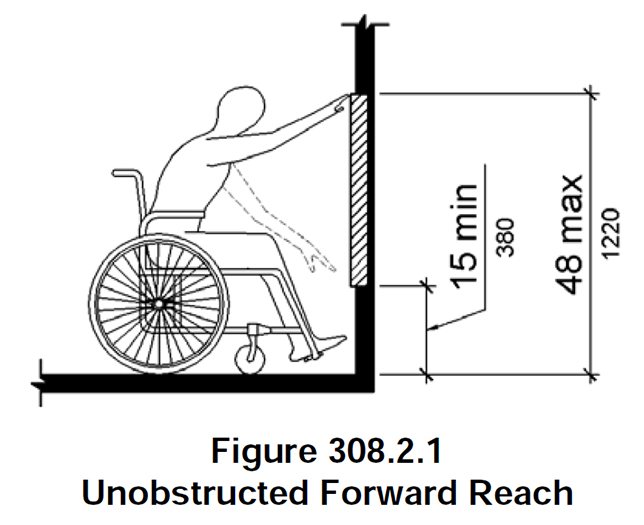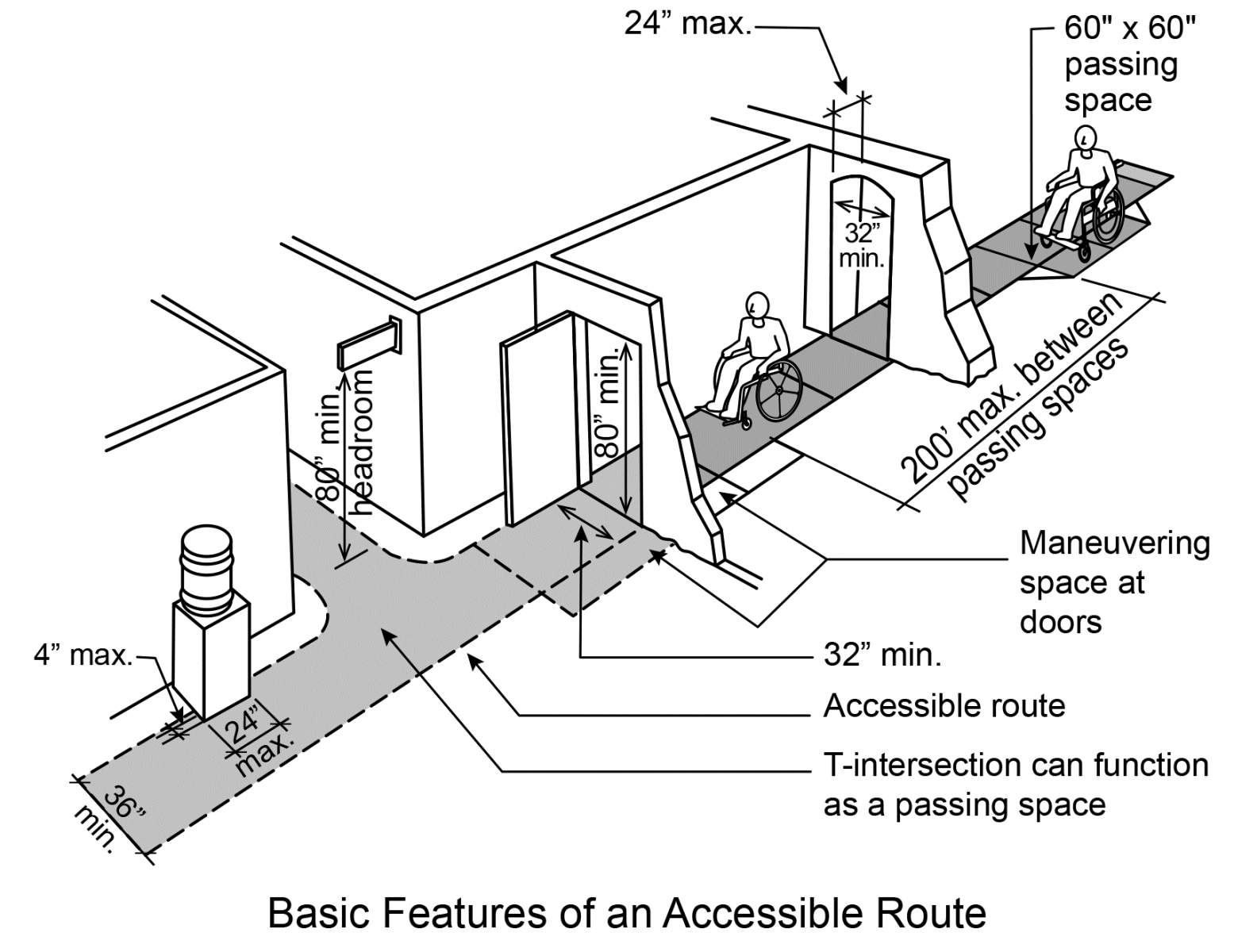Table Of Content

(ii) If full compliance with this section would be structurally impracticable, compliance with this section is required to the extent that it is not structurally impracticable. “Playing by the rules” might not be the first thing you think of when attempting to create great visuals. But if you fail to prioritize inclusivity, you’re sure to alienate — and frustrate — countless viewers that you can’t afford to lose.By following these simple guidelines, I promise you’ll ace those accessibility best practices and satisfy the WCAG / ADA Standards for Accessible Design with no problem. Sign up for Venngage today and get access to tons of accessible templates that are a breeze to customize using our best-in-class Accessible editor. From step-by-step guidance to a built-in accessibility checker, you’ll have total peace of mind and be ADA compliant in no time. Accessibility best practices for designs and visuals should focus on making sure that all users can interact with your visual elements.
Dining Surfaces and Work Surfaces
Apart from those addressed by ADAAG, the Department sees no reason to treat a particular type of sales or rental establishment differently from any other. Although banks and travel services are not included as "sales or rental establishments,’’ because they do not fall under paragraph (5) of the definition of place of public accommodation, grocery stores and drug stores are included. Most of those responding to the first question (overwhelmingly groups representing people with disabilities, or individual commenters) urged that the definition encompass more places of public accommodation, such as restaurants, motion picture houses, laundromats, dry cleaners, and banks. They pointed out that often it is not known what types of establishments will be tenants in a new facility.
10 Elevators
A More Accessible Exterior (2010) - Landscape Architecture Magazine
A More Accessible Exterior ( .
Posted: Wed, 09 May 2012 07:00:00 GMT [source]
(6) The appliance shall be placed 80 in (2030 mm) above the highest floor level within the space or 6 in (152 mm) below the ceiling, whichever is lower. (2) Shear stress induced in a grab bar or seat by the application of 250 lbf (1112N) shall be less than the allowable shear stress for the material of the grab bar or seat. If the connection between the grab bar or seat and its mounting bracket or other support is considered to be fully restrained, then direct and torsional shear stresses shall be totaled for the combined shear stress, which shall not exceed the allowable shear stress. Hot water and drain pipes exposed under sinks shall be insulated or otherwise configured so as to protect against contact. If provided, curbs in shower stalls 36 in by 36 in (915 mm by 915 mm) shall be no higher than 1/2 in (13 mm).
CHAPTER 7: COMMUNICATION ELEMENTS AND FEATURES

A substantial number of commenters objected to the Department’s imposition of a safe harbor for alterations to facilities of public entities that comply with the 1991 Standards. These commenters argued that if a public entity is already in the process of altering its facility, there should be a legal requirement that individuals with disabilities be entitled to increased accessibility by using the 2010 Standards for path of travel work. They also stated that they did not believe there was a statutory basis for “grandfathering” facilities that comply with the 1991 Standards. This document contains scoping and technical requirements for accessibility to sites, facilities, buildings, and elements by individuals with disabilities. The requirements are to be applied during the design, construction, additions to, and alteration of sites, facilities, buildings, and elements to the extent required by regulations issued by Federal agencies under the Americans with Disabilities Act of 1990 (ADA).
A10.3 Fixed Facilities and Stations
The 1991 Standards also require a canopy or roof overhang at this passenger loading zone. Inmates are sometimes housed in medical units or infirmaries separate from the general population simply because there are no accessible cells. In addition, some inmates have alleged that they are housed at a more restrictive classification level simply because no accessible housing exists at the appropriate classification level.
Chapter 10: Recreation Facilities
As a result of the illustrations, some commenters concluded that any alteration to a facility, even a minor alteration such as relocating an electrical outlet, would trigger an extensive obligation to provide access throughout an entire facility. For example, a two-story facility built for mixed-use occupancy on both floors (e.g., by sales and rental establishments, a movie theater, restaurants, and general office space) is a shopping center or shopping mall if it houses five or more sales or rental establishments. Potential patrons of places of public accommodation, such as retail establishments, should be able to get to a store, get into the store, and get to the areas where goods are being provided. Employees should have the same types of access, although those individuals require access to and around the employment area as well as to the area in which goods and services are provided. Many commenters pointed out the importance of ensuring that modifications provide the individual with a disability an equal opportunity to demonstrate his or her knowledge or ability.
Guide to the ADA Accessibility Standards
The Department has amended this subpart to adopt the 2004 ADAAG, set forth the effective dates for implementation of the 2010 Standards, and make related revisions as described below. Section 35.151(f) uses the term “sleeping room” in lieu of the term “guest room,” which is the term used in the transient lodging standards. There are a variety of seats available on pool lifts ranging from sling seats to those that are preformed or molded. Pool lift seats with backs will enable a larger population of persons with disabilities to use the lift.
A4.23 Bathrooms, Bathing Facilities, and Shower Rooms
The grab bars mounted on the back (long) wall shall be a minimum 24 inches (610 mm) in length located 12 inches (305 mm) maximum from the foot of the tub and 24 inches (610 mm) maximum from the head of the tub. One grab bar on the back wall shall be located 9 inches (230 mm) above the rim of the tub. The other shall be 33 to 36 inches (840 mm to 915 mm) above the bathroom floor. At the head of the tub, the grab bar shall be a minimum of 12 inches (305 mm) in length measured from the outer edge of the tub. If the approach is parallel to the bathtub, a 30 inches (760 mm) minimum width by 75 inches (1905 mm) minimum length clear space is required alongside the bathtub. The seat width shall be 15 inches (380 mm), measured from the back wall to the front of the seat, and shall extend the full width of the tub.
Recreational Boating Facilities
(1) At least one accessible route within the boundary of the site shall be provided from public transportation stops, accessible parking, and accessible passenger loading zones, and public streets or sidewalks to the accessible building entrance they serve. The last three chapters of the standards deal with specialized situations. Some of the scenarios covered in Chapter 8 include wheelchair seating in an auditorium setting, fitting rooms, guest rooms in hotels, holding cells and courtrooms, and transportation facilities.
A door equipped with a power-operated mechanism and controls that open and close the door automatically upon receipt of a momentary actuating signal. The switch that begins the automatic cycle may be a photoelectric device, floor mat, or manual switch (see power-assisted door). Appendix A to Part 36 – Standards for Accessible Design, from the Department’s 1991 title III ADA regulation published July 26, 1991.
The area or room shall be provided with an exit directly to an exit enclosure. Where the room or area exits into an exit enclosure which is required to be of more than one-hour fire-resistive construction, the room or area shall have the same fire-resistive construction, including the same opening protection, as required for the adjacent exit enclosure. (4) A vestibule located immediately adjacent to an exit enclosure and constructed to the same fire-resistive standards as required for corridors and openings. All walks, halls, corridors, aisles, skywalks, tunnels, and other spaces that are part of an accessible route shall comply with 4.3. If the clear floor space only allows forward approach to an object, the maximum high forward reach allowed shall be 48 in (1220 mm) (see Fig. 5 and Fig. 5(a)).
Patient bedrooms or cells required to comply with 223 shall be provided in addition to any medical isolation cells required to comply with 232.3. Where a two-way communication system is provided to gain admittance to a building or facility or to restricted areas within a building or facility, the system shall comply with 708. Different types of lockers may include full-size and half-size lockers, as well as those specifically designed for storage of various sports equipment.


No comments:
Post a Comment